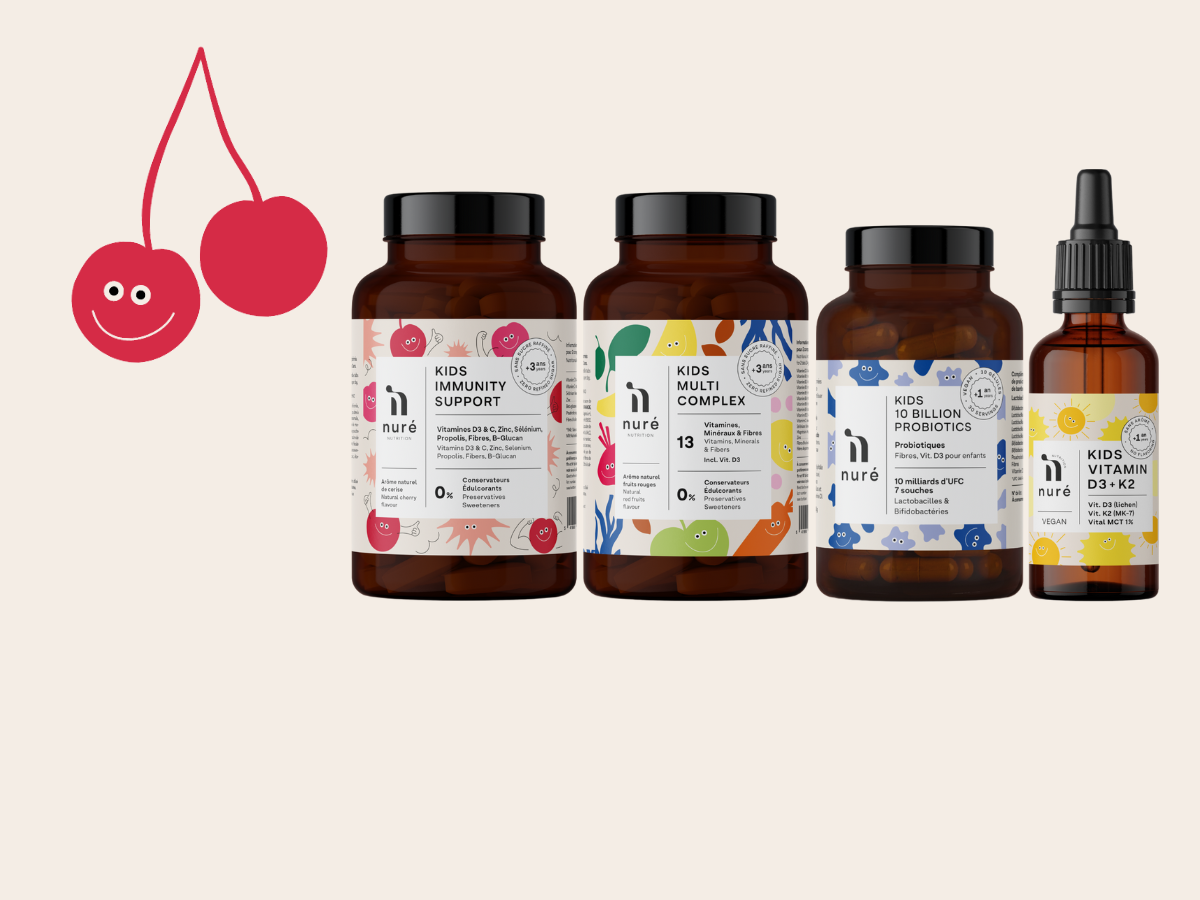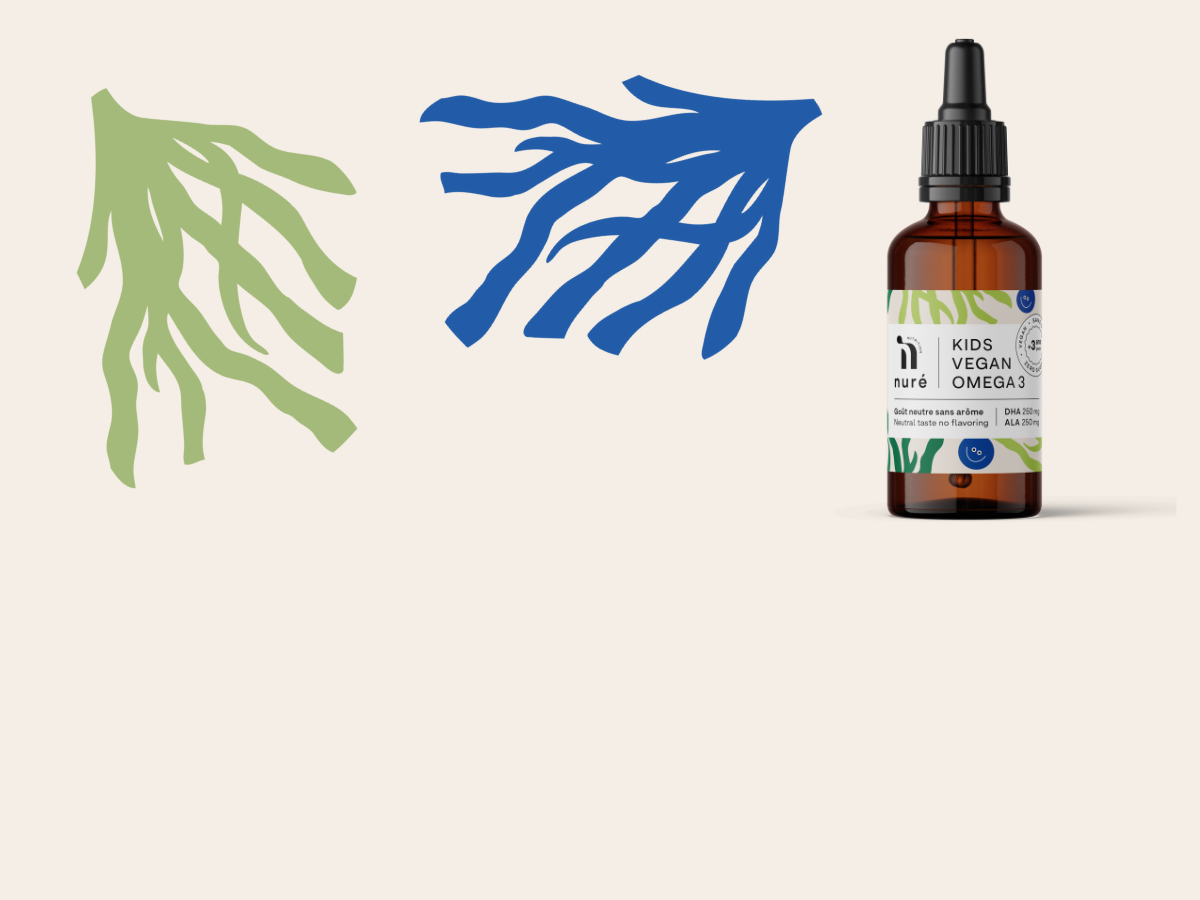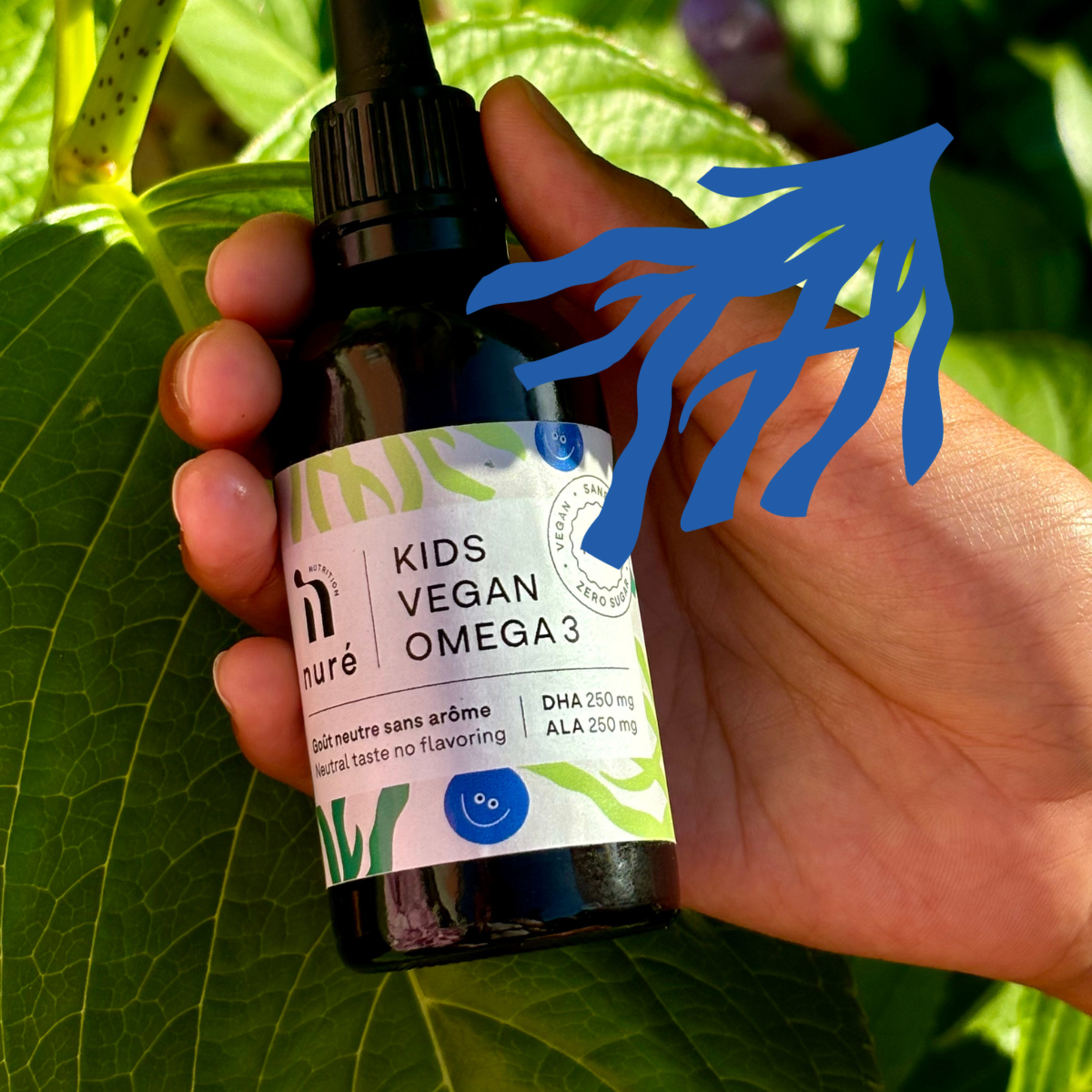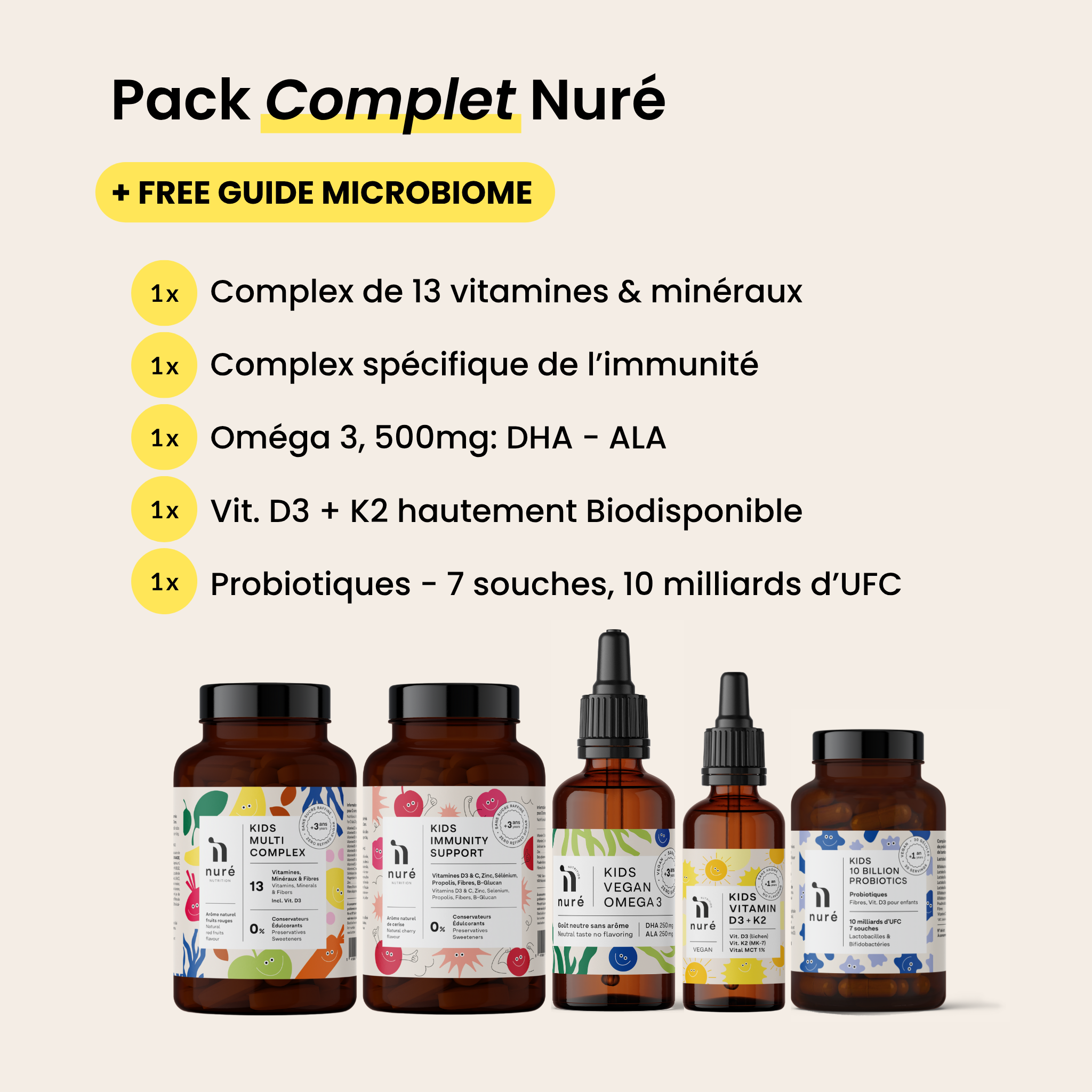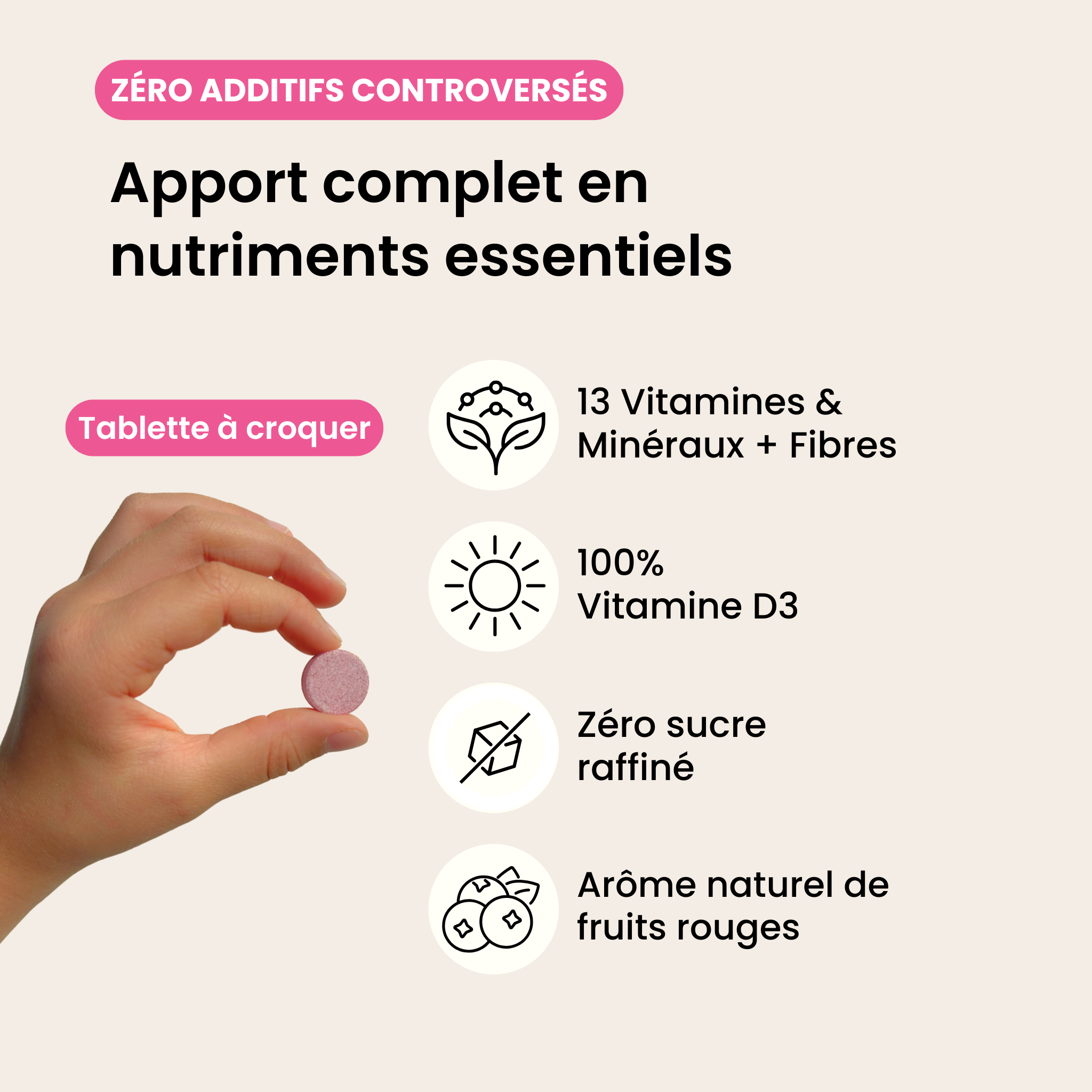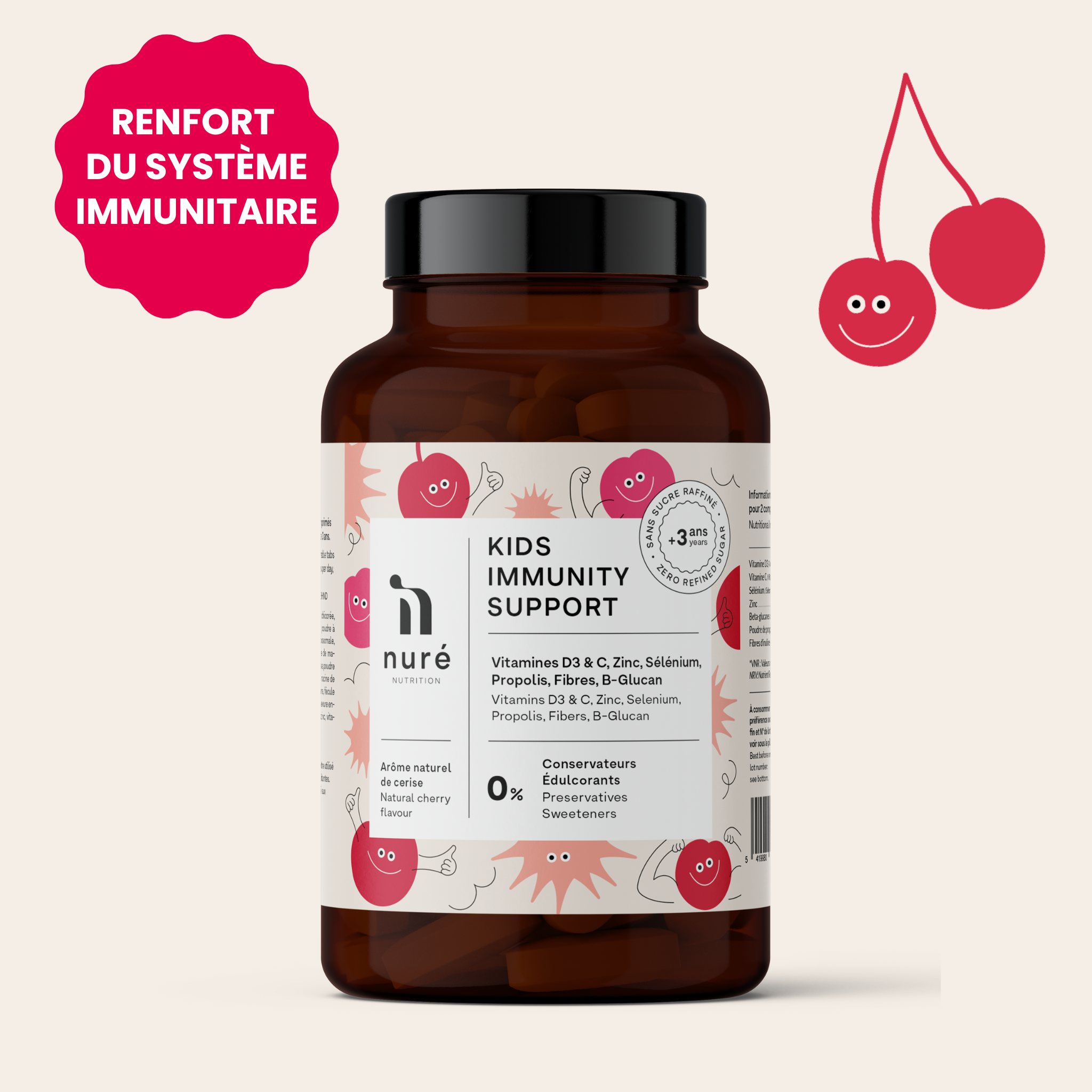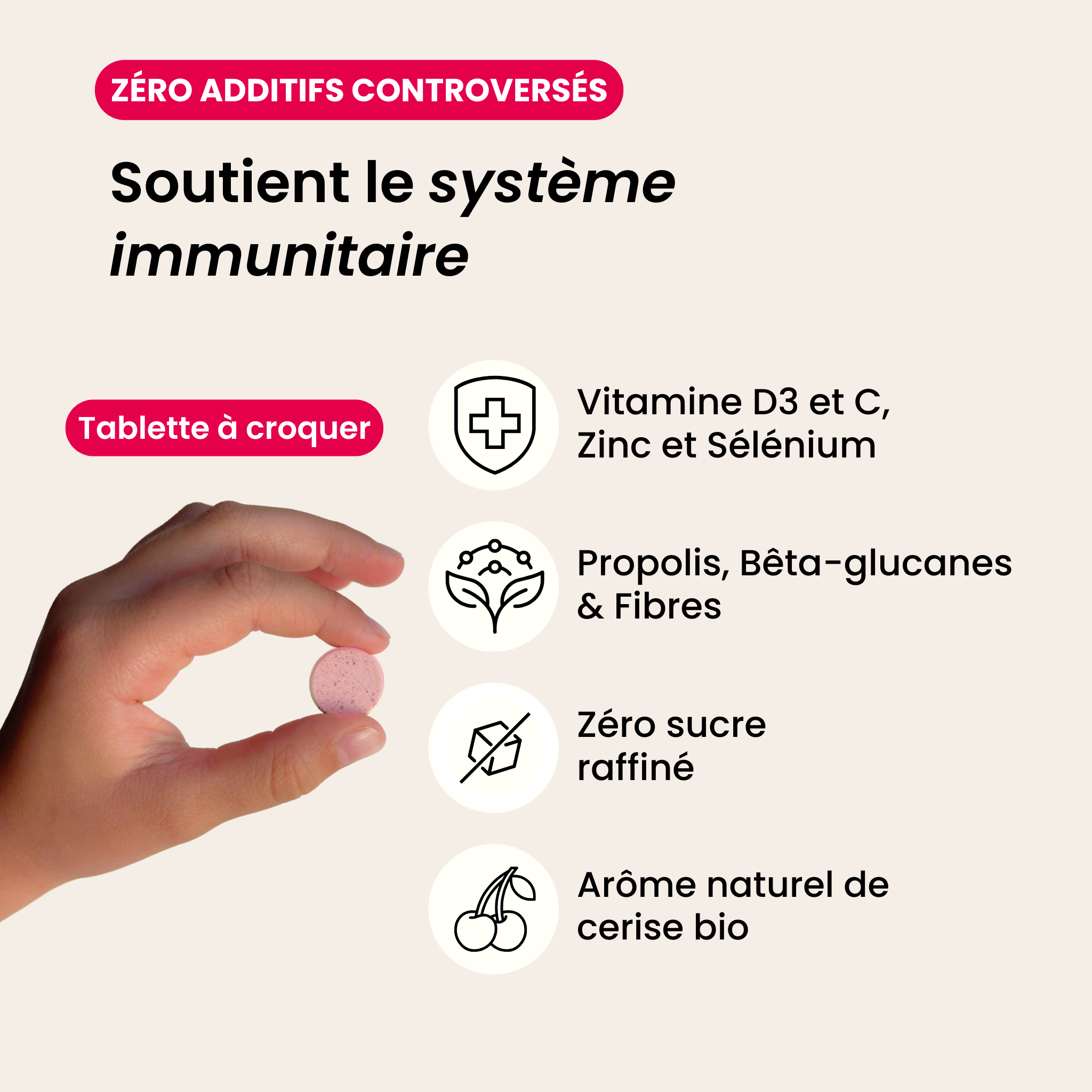Omega-3 fatty acids are essential lipids (fats) that our bodies can’t produce on their own, so we need to get them from our diet.
Among the three main types of omega-3, we find:
- Alpha-linolenic acid (ALA) – Primarily present in plants
- Eicosapentaenoic acid (EPA) - Primarily present in fatty fish
- Docosahexaenoic acid (DHA) - Primarily present in fatty fish
DHA plays a particularly important role in children's development. However, a study published in the European Journal of Nutrition (1) shows that 80% of children and up to 90% of adolescents in France do not consume enough EPA and DHA omega-3 fatty acids, along with very low quantities of ALA. This contributes to an imbalance in the omega-6/omega-3 ratio. Even among children who consume more than two servings of fish per week, EPA and DHA intake remains insufficient.
This imbalance between omega-6 and omega-3 could harm young people’s neurological development and increase the risk of diseases in childhood and adolescence, as well as later in life, such as obesity, metabolic syndrome, cardiovascular disease, and allergies.
In this article, we will explore what omega-3s are, their specific role in children, and why they are essential. We will also look at recommended dosages and the best dietary sources.
What are Omega-3s?
Omega-3s are a family of essential polyunsaturated fatty acids important for human health. The term "essential" means that the human body cannot synthesize them, so they must be obtained through diet. The main types of omega-3 are:
Alpha-linolenic acid (ALA): Mainly found in plant sources such as flax seeds, walnuts, and vegetable oils (canola, camelina, and flaxseed oils). ALA can be partially converted by the body into EPA and DHA, although this conversion is uncertain and dependent on many factors.
Eicosapentaenoic acid (EPA): Mainly found in fatty fish like salmon, mackerel, sardines, and tuna. EPA plays an important role in reducing inflammation and protecting against heart disease.
Docosahexaenoic acid (DHA): Also found in fatty fish, it is crucial for brain and eye development and function. DHA is particularly important for neurological development in infants and children, and we will primarily focus on this omega-3.
What is the direct role of omega-3 in children?
Brain Development: DHA is a major component of brain phospholipids and is essential for the growth and maturation of neural cells. A study published in The American Journal of Clinical Nutrition (2) showed that children with an adequate DHA intake have better cognitive performance, including memory, learning, and concentration.
Visual Health: The retina of the eye contains a high concentration of DHA, which plays a role in visual development and function. Several studies (3) show that children receiving sufficient DHA have better visual acuity.
Immune System: Omega-3s, including DHA, have anti-inflammatory properties and can strengthen the immune system. Research from the University of Wisconsin School of Medicine, USA (4), found that children with adequate omega-3 intake have a better immune response and reduced incidences of inflammatory diseases.
Sleep: A study conducted by Oxford University (5) reveals that higher blood levels of DHA are strongly correlated with better sleep quality. Additionally, a higher DHA-to-arachidonic acid (AA) ratio is linked to fewer sleep issues. Children who received DHA supplements slept an average of 58 minutes more per night and woke up seven times less than those receiving a placebo.
Importance of DHA
Children have specific nutrient needs to support their rapid growth and neurological development. DHA is particularly important because it contributes to:
- The formation and maintenance of cellular structure.
- Signaling between neural cells.
- Protection against oxidative stress in the brain.
- Modulation of inflammatory processes.
Recommended DHA sosages per day
Recommendations vary slightly by health authority, but here is a general estimate based on current guidelines:
Children (3-13 years): 200-250 mg of DHA per day.
The need may increase if the child consumes a lot of omega-6.
Children should consume at least two servings per week of small, fatty fish with additional ALA-rich vegetable oils.
What are the dietary sources of DHA?
Fatty Fish: Salmon, Mackerel, Sardines, Tuna
Fish Oils: Such as cod liver oil
However, avoid overconsuming large fatty fish like salmon, tuna, or swordfish, as they contain high levels of harmful heavy metals due to marine and river pollution. For instance, excess methylmercury can cause fatigue, dizziness, and toxicity to the kidneys, liver, and brain. It is particularly toxic for fetuses and infants, potentially harming brain development.
Algae: Algae-based supplements are a vegetarian option rich in DHA.
Breast Milk: For infants, breast milk naturally contains high DHA levels, especially if the mother consumes omega-3-rich foods. Infant formulas are also enriched with DHA.
What are the dietary sources of ALA?
Certain vegetable oils, like canola, camelina, or flaxseed oil, are rich in omega-3 ALA. Note that these oils cannot be heated and should be stored in a dark glass bottle after opening to prevent omega-3 ALA oxidation.
Essential Plant-Based Omega-3s for Kids
To ensure your child gets the essential Omega-3s they need for immunity, brain function, and vision, we’ve developed a plant-based Omega-3 oil designed specifically for kids. Unlike fish-based DHA, which can contain contaminants like heavy metals and has a strong fishy taste, our vegan supplement is derived from pure microalgae, offering a clean and safe source of DHA.
For ALA, we've included nutrient-rich chia oil and organic rapeseed oil, providing a balanced and natural blend of fatty acids. With its neutral flavor, it mixes easily into any food or drink or can be taken on its own. Our formula is free from additives and refined sugars, offering a pure, everyday dose tailored for children aged 3-13. By avoiding fish oil, we eliminate the risk of ocean pollutants, ensuring a healthier, cleaner Omega-3 for your child. A TOTOX test is performed on each batch to ensure the absence of oxidation in the omega-3s.
✔ Omega-3 (500 mg)
✔ Omega-3 DHA (250 mg) from microalgae
✔ Omega-3 ALA (250 mg) from chia and organic rapeseed oil
✔ 100% Plant-Based
✔ Guaranteed purity: TOTOX value < 10
✔ No fishy taste, neutral flavor
✔ Zero Additives & Zero Refined Sugar
✔ Kids' Dosage (ages 3-13)
🇫🇷 Made in France
Discover our Vegan Omega-3 Oil for Kids
References:
(1) ”Inadequate daily intakes of n-3 polyunsaturated fatty acids (PUFA) in the general French population of children (3–10 years) and adolescents (11–17 years): the INCA2 survey." P. Guesnet, J. Tressou, B. Buaud, et al. European Journal of Nutrition. 2019; 58: 895–903. URL: https://pubmed.ncbi.nlm.nih.gov/29687265/
(2) “Low blood long-chain omega-3 fatty acids in UK children are associated with poor cognitive performance and behavior: a cross-sectional analysis from the DOLAB study." P. Montgomery, J.R. Burton, R.P. Sewell, T.F. Spreckelsen, A.J. Richardson. The American Journal of Clinical Nutrition. 2013 Jun 24;8(6):e66697. URL: https://pubmed.ncbi.nlm.nih.gov/23826114/
(3) “J Inherit Metab Dis." Q. Wu, Ph.D., T. Zhou, M.D., L. Ma, M.D., D. Yuan, Ph.D., Y. Peng, M.D., Ph.D. The Waisman Center and Department of Pediatrics, University of Wisconsin Medical School, Madison, Wisconsin, USA; Department of Ophthalmology and Visual Sciences, University of Wisconsin Medical School. 1999; 22(3): 276–280. URL: https://www.ncbi.nlm.nih.gov/pmc/articles/PMC2694039/
(4) “Docosahexaenoic acid and retinal function in children with long-chain 3-hydroxyacyl-CoA dehydrogenase deficiency." C.O. Harding, M.B. Gillingham, S.C. Van Calcar, J.A. Wolff, J.N. Verhoeve, M.D. Mills. Journal of Inherited Metabolic Disease. 1999; 22(3): 276–280. URL: https://www.ncbi.nlm.nih.gov/pmc/articles/PMC2694039/
(5) “Fatty acids and sleep in UK children: subjective and pilot objective sleep results from the DOLAB study—a randomized controlled trial." P. Montgomery, J.R. Burton, R.P. Sewell, T.F. Spreckelsen, A.J. Richardson. Journal of Sleep Research. 2014; 23(4): 364–388. URL: https://pubmed.ncbi.nlm.nih.gov/24605819/

